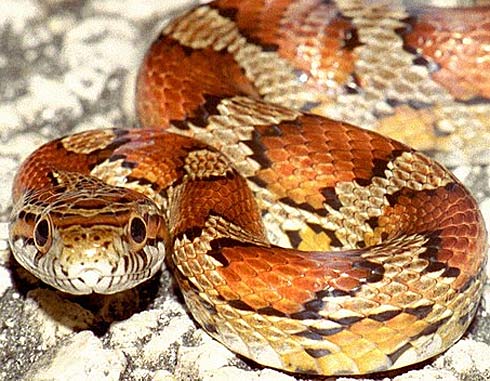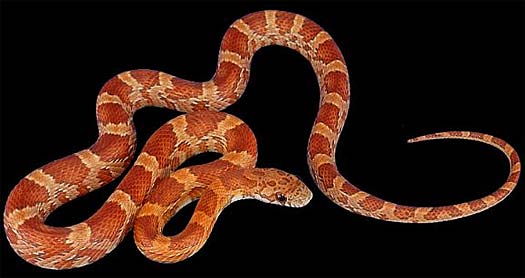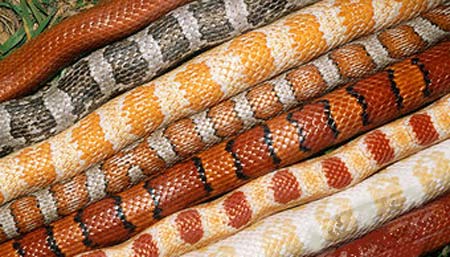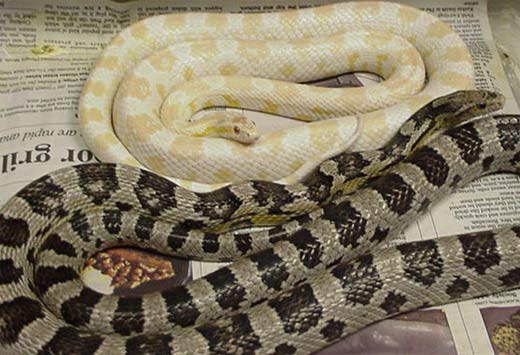Corn Snake – Red Rat Snake, Nice Colors, Not Dangerous

Also known as the red rat snake, the corn snake is named for its former habit of invading corn storages in order to eat the rodents inside (this name dates all the way back to the 1600s). Preferring habitats such as overgrown fields, forest clearings, trees, flatwoods or pine barrens, and abandoned human structures anywhere from 0 to 6,000 feet above sea level. The corn snake can be found throughout the eastern and central United States, including New Jersey, Texas and Florida. They come in a variety of different colors, varying in black, orange, red, yellow and white with some beautiful patterns of black and white on their bellies.


Corn snakes are not very large, growing between 3.9 and 6 feet (1.2 to 1.8 meters), and have a strong aversion to biting humans; this leads to their not being considered a threat. They are known to hibernate during winters when living in colder regions, but are known to only brumate (hide in crevices on cold days and soak up the sun on warmer days in order to regulate their temperatures) in more temperate climates.


Corn snakes breed shortly after the beginning of winter, and eggs are laid about a month later in groups of 12 to 24. Upon being laid in a warm, moist, hidden location. The eggs are abandoned by the mother forever, hatching about 10 weeks later. They are often kept as pets because of their lack of aggression, manageable size, nice pretty colors and ease of breeding.

